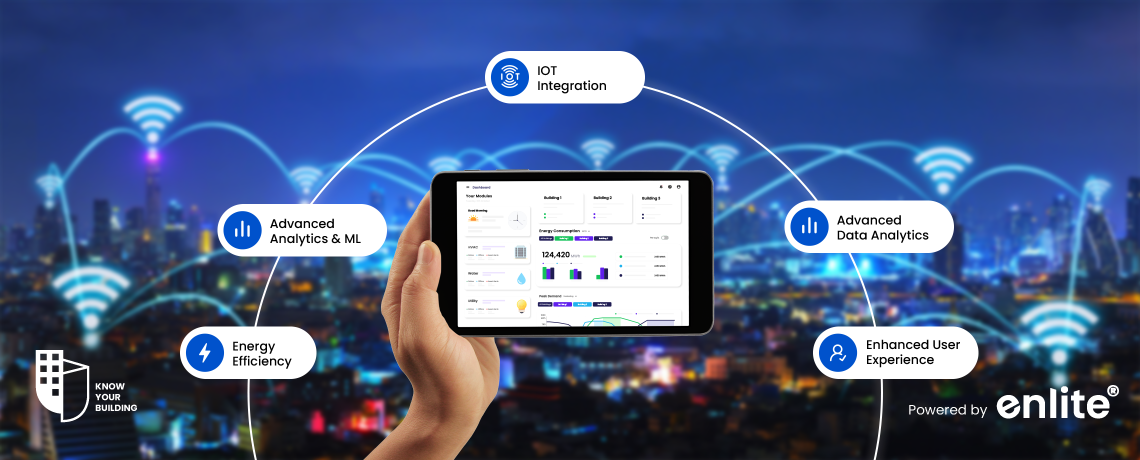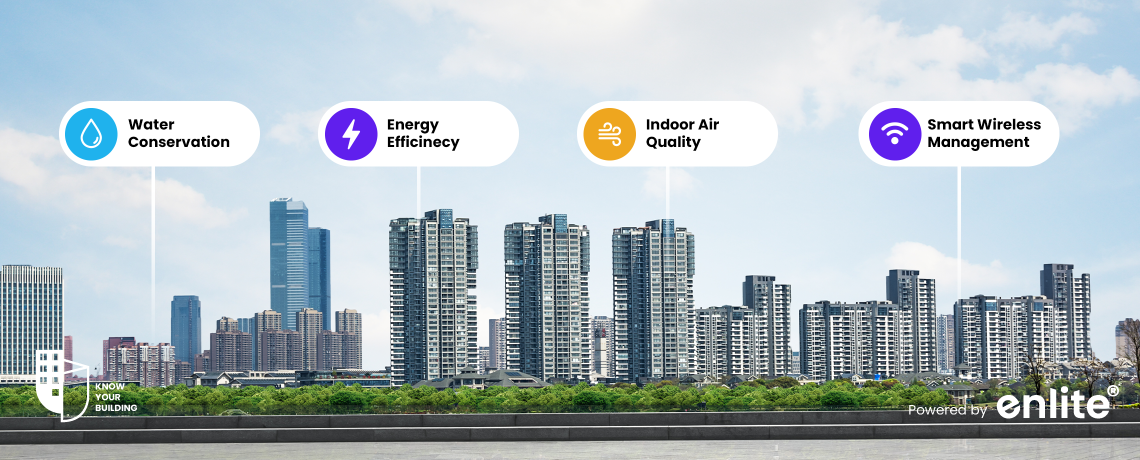Introduction
In an era marked by growing concerns over climate change and energy consumption, the integration of advanced technologies has emerged as a critical solution to build a more sustainable future. Among these transformative technologies, the synergy of Artificial Intelligence (AI) and the Internet of Things (IoT) is reshaping the landscape of Building Energy Management System (BEMS). BEMS, which are instrumental in controlling and optimizing energy usage within buildings, are experiencing a remarkable evolution due to the integration of AI and IoT, ushering in unprecedented levels of energy efficiency and environmental responsibility.
Understanding Building Energy Management Systems (BEMS)
Building Energy Management Systems (BEMS) constitute an intricate web of hardware and software components designed to monitor, control, and optimize energy consumption within commercial, industrial, and residential buildings. These systems encompass a diverse range of technologies that aim to improve energy efficiency, reduce operational costs, and minimize the environmental impact of buildings. By offering a centralized platform for energy management, BEMS provide facility managers with the tools to make informed decisions about energy consumption and enhance the overall performance of building systems.
The Role of AI in BEMS
AI has emerged as a pivotal player in revolutionizing BEMS, empowering them to go beyond conventional approaches and achieve unparalleled levels of optimization.
- Predictive Analytics for Energy Usage: AI algorithms analyse historical and real-time data to discern patterns in energy consumption. This analytical prowess enables BEMS to predict future energy usage trends accurately. By forecasting peak demand periods and potential energy wastage, BEMS can proactively adjust building systems to optimize energy usage.
- Optimal Energy Distribution: AI-driven BEMS can dynamically allocate energy resources across various building subsystems. These systems utilize real-time data from IoT sensors to adjust heating, cooling, and lighting in response to occupancy patterns, weather conditions, and other variables. This dynamic optimization ensures that energy resources are allocated efficiently to meet occupants’ needs while minimizing waste.
- Fault Detection and Maintenance: The integration of AI into BEMS empowers them with the capability to detect anomalies in equipment performance. By analysing data from IoT sensors and comparing it with predefined norms, AI can identify potential faults and maintenance requirements. This predictive approach prevents costly breakdowns, reduces downtime, and extends the lifespan of critical building equipment.
Leveraging IoT for Enhanced BEMS
IoT serves as the foundation upon which the enhanced capabilities of BEMS rest, providing a continuous stream of real-time data that feeds AI algorithms.
- Real-time Data Collection: IoT sensors positioned throughout the building collect a wide array of data, including temperature, humidity, occupancy, and energy consumption. This granular real-time data forms the basis for AI-driven insights and optimizations.
- Remote Monitoring and Control: The connectivity enabled by IoT allows facility managers to monitor and control building systems remotely. With real-time data at their disposal, managers can make informed decisions, adjust settings, and optimize energy consumption from virtually anywhere.
- Occupant Comfort Optimization: IoT sensors play a pivotal role in optimizing occupant comfort. By tracking occupancy patterns and environmental conditions, BEMS can dynamically adjust lighting, heating, and cooling settings to create a comfortable indoor environment that aligns with occupants’ preferences.
By harnessing predictive analytics, optimal resource allocation, and real-time data insights, these enhanced BEMS contribute significantly to the pursuit of energy efficiency and sustainability in our built environment.
Benefits of AI and IoT Integration in Building Energy Management Systems
The convergence of Artificial Intelligence (AI) and the Internet of Things (IoT) within Building Energy Management Systems (BEMS) is unlocking a myriad of benefits that are propelling us towards a greener and more efficient future.
- Energy Efficiency and Cost Savings: The integration of AI and IoT empowers BEMS to optimize energy consumption with unparalleled precision. AI algorithms analyse real-time data from IoT sensors to predict energy usage patterns and adjust building systems accordingly. This predictive approach minimizes wasteful energy consumption during peak demand periods and non-peak hours, leading to substantial cost savings. Facilities equipped with AI-driven BEMS witness a significant reduction in energy bills and operational expenses over time.
- Sustainability and Environmental Impact: The environmental implications of AI and IoT integration in BEMS are profound. By fine-tuning energy consumption based on real-time occupancy and weather data, these systems play a pivotal role in reducing carbon footprints. The optimized energy distribution, informed by AI insights, significantly curtails greenhouse gas emissions. The combination of energy efficiency and sustainability positions AI-powered BEMS as crucial allies in global efforts to mitigate climate change and promote responsible resource management.
- Improved Occupant Experience: AI and IoT-driven BEMS enhance the comfort and well-being of building occupants. By continuously monitoring occupancy and environmental conditions, these systems adjust lighting, heating, and cooling settings to create a personalized and comfortable indoor environment. This proactive approach not only boosts occupants’ comfort but also enhances their productivity and satisfaction, fostering a more positive relationship between occupants and the building they inhabit.
The Path Forward: A Greener Future
The challenges associated with AI and IoT integration in BEMS should not deter us from forging ahead on the path toward a greener and more sustainable future. Addressing these challenges lays the groundwork for building systems that are not only energy-efficient but also technologically robust and secure.
- Collaborative Solutions: Industry collaboration and partnerships between technology providers, building managers, and regulatory bodies are pivotal in addressing integration complexities. Developing standardized protocols and frameworks can facilitate smoother integration and interoperability among different components of AI and IoT-enabled BEMS.
- Cybersecurity Measures: To combat data security and privacy concerns, robust cybersecurity measures must be employed. This includes regular security audits, vulnerability assessments, and the adoption of industry best practices to safeguard data and protect against potential cyber threats.
- Education and Upskilling: Investing in workforce education and upskilling is crucial to overcome the skill gap challenge. Organizations can provide training programs to help employees become proficient in managing AI-driven analytics, IoT devices, and data privacy protocols.














